It looks like you're using an Ad Blocker.
Please white-list or disable AboveTopSecret.com in your ad-blocking tool.
Thank you.
Some features of ATS will be disabled while you continue to use an ad-blocker.
share:
In another thread we are looking at the question of Inca buildings and the problem of assigning their construction to an unknown lost
civilization.
What is very important about this cave is that within it it holds a stratigraphy that is shows 5,500 years of archaic history by its layers. Levels were included in the Early and Middle Horizon occupations, cist tombs, and later wall paintings between about the 1000 BCE–1000 CE
Location of the cave in relationship to other important early sites in Peru
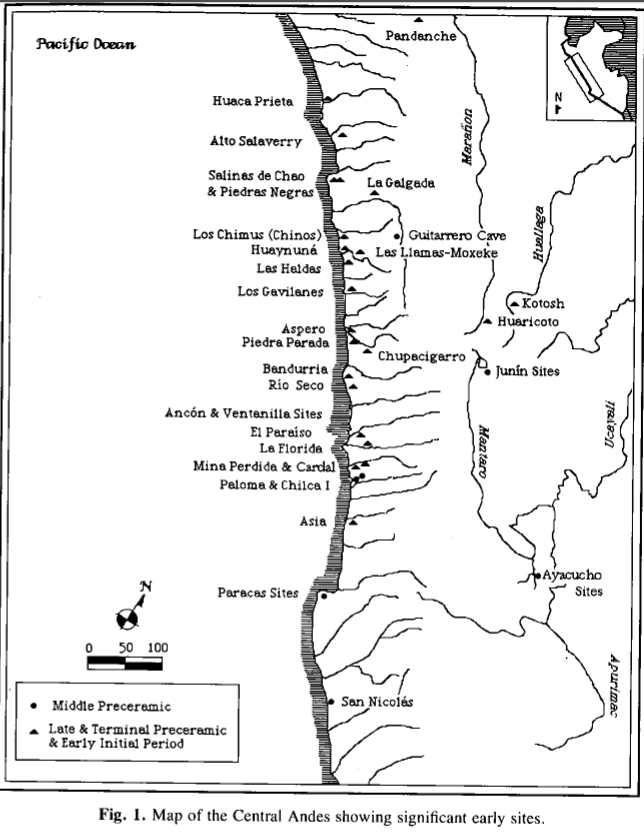
In the cave were found the first uses of a number of plants:
Ají pepper (Capsicum baccatum): first appears at Guitarrero cave in 8,500 BCE
Oca (Oxalis tuberosa): first appears 8,500–7,500 BCE
Aji (Capsicum chinense): first appears 8,000–7,500 BCE
Common bean (Phaseolus vulgaris): first appears 8,000–7,500 BCE
Pallar bean (Phaseolus lunatus): first appears 8,000–7,5000 BCE
Lúcuma (Lucuma bifera): first appears 8,000–5,500 BCE
Olluco (Ullucus tuberosus): first appears 6,000 BCE at the cave Tres Ventanas in Chile and next at Guitarrero cave 5,500 BCE.
Zapallo (Cucurbita sp.): first appears 7,000 BCE
Maize or corn (Zea mays): possibly first traces but not conclusively identified from 6,200 BCE
From the wikipedia site on the cave; en.wikipedia.org...
Do to the importance of the site many of the scientific papers dealing with it are unfortunately behind pay walls.
Early HG of South America-speaks in general and also about the cave
Late ceramic period in Peru
Chronology of the cave -abstract- article behind pay wall
More germane to the discussion is that within this cave which was used for thousands of years no signs of 'lost civilization', no out of place trade goods and we see the first signs of domestication of plants.
Some believe that the people who lived in this cave were the ancestors of the Chavin people
What is very important about this cave is that within it it holds a stratigraphy that is shows 5,500 years of archaic history by its layers. Levels were included in the Early and Middle Horizon occupations, cist tombs, and later wall paintings between about the 1000 BCE–1000 CE
Location of the cave in relationship to other important early sites in Peru

In the cave were found the first uses of a number of plants:
Ají pepper (Capsicum baccatum): first appears at Guitarrero cave in 8,500 BCE
Oca (Oxalis tuberosa): first appears 8,500–7,500 BCE
Aji (Capsicum chinense): first appears 8,000–7,500 BCE
Common bean (Phaseolus vulgaris): first appears 8,000–7,500 BCE
Pallar bean (Phaseolus lunatus): first appears 8,000–7,5000 BCE
Lúcuma (Lucuma bifera): first appears 8,000–5,500 BCE
Olluco (Ullucus tuberosus): first appears 6,000 BCE at the cave Tres Ventanas in Chile and next at Guitarrero cave 5,500 BCE.
Zapallo (Cucurbita sp.): first appears 7,000 BCE
Maize or corn (Zea mays): possibly first traces but not conclusively identified from 6,200 BCE
From the wikipedia site on the cave; en.wikipedia.org...
Do to the importance of the site many of the scientific papers dealing with it are unfortunately behind pay walls.
Early HG of South America-speaks in general and also about the cave
Late ceramic period in Peru
Chronology of the cave -abstract- article behind pay wall
Dating by accelerator mass spectrometry of wooden artifacts, cord, and charcoal samples from Guitarrero Cave, Peru, supports the antiquity of South America's earliest textiles and other perishable remains. The new dates are consistent with those obtained from disintegration counters and leave little doubt about the integrity of the lower Preceramic layers and their early cultivars. Re-evaluation of the mode of deposition suggests that most of the remains resulted from short-term use of the cave in the eighth millennium B.C., with a possible brief human visit as early as 12,560 years ago.
More germane to the discussion is that within this cave which was used for thousands of years no signs of 'lost civilization', no out of place trade goods and we see the first signs of domestication of plants.
Some believe that the people who lived in this cave were the ancestors of the Chavin people
originally posted by: punkinworks10
a reply to: Hanslune
Awsome Hans,
That is the cave I used as s question in the ats game.
Thanks and what or where is the 'ats game'?
Hans,
It was a quiz thread from last year or so, where a question or image was posted by a member, and the first person who correctly answered or identified the image got to post the next question.
I thought that you had started it , but I guess not.
It was a quiz thread from last year or so, where a question or image was posted by a member, and the first person who correctly answered or identified the image got to post the next question.
I thought that you had started it , but I guess not.
edit on 19-9-2014 by punkinworks10 because: (no reason given)
edit on
19-9-2014 by punkinworks10 because: (no reason given)
originally posted by: punkinworks10
Hans,
It was a quiz thread from last year or so, where a question or image was posted by a member, and the first person who correctly answered or identified the image got to post the next question.
I thought that you had started it , but I guess not.
Oh yes I remember now but I think it had a different name.
originally posted by: Hanslune
originally posted by: punkinworks10
Hans,
It was a quiz thread from last year or so, where a question or image was posted by a member, and the first person who correctly answered or identified the image got to post the next question.
I thought that you had started it , but I guess not.
Oh yes I remember now but I think it had a different name.
I'm glad to see members remember that one !
www.abovetopsecret.com...
Hans, already flagged your thread as always mt friend
originally posted by: Trueman
originally posted by: Hanslune
originally posted by: punkinworks10
Hans,
It was a quiz thread from last year or so, where a question or image was posted by a member, and the first person who correctly answered or identified the image got to post the next question.
I thought that you had started it , but I guess not.
Oh yes I remember now but I think it had a different name.
I'm glad to see members remember that one !
www.abovetopsecret.com...
Hans, already flagged your thread as always mt friend
Ah... you were the guilty party (Ah ....ou fuera el culpable)
originally posted by: Hanslune
More germane to the discussion is that within this cave which was used for thousands of years no signs of 'lost civilization', no out of place trade goods and we see the first signs of domestication of plants.
I guess it depends on how you define "civilization".
The Guitarrero Cave has yielded South Americas oldest textile, 12 000 years old.
www.pasthorizonspr.com...
So at least we know that one of the components of civilization, that of textile making, was present in this area at the same time as the Göbleki Tepe culture flourished in Anatolia... where no textiles have been found (although button-like artifacts that could have been part of garments have been found).
Textile making indicates (but does not prove) sedentary settlements, cultural and social organization. Also, some of these twined fabrics were probably used as rope or some type of basket weaving, which indicates further sophistication in their tool kit.
Some archaeologists make a lot of hoopla out of the fact that Göbleki Tepe was a pre-pottery culture, which is awfully primitive. Still they managed to build some of the most impressive megalithic structures ever made by man. Do you see where I am going with this?
To make a long story short, my summer house is situated a 30 minute drive from Saksaywaman, an Andean archaeological site you may be acquainted with from various "How did they do it?" threads here on ATS, and I have one of the most impressive Inca ruins outside my bedroom window. In fact, I'm looking at it as I write this.
I hike a lot in the Sacred Valley and around Cusco, the ancient Inca capital, and as a retired(?) archaeologist I can tell you one thing. There is so much more to be discovered here, and the number of important archaeological sites are in some places higher in concentration than in Israel, Cyprus, Syria or Jordan, perhaps even Egypt. When I look at the totality of it all, it makes no sense to squeeze it all into that 200 year period that the Inca empire lasted. We have perhaps with too much simplicity connected the greatest Andean sites with the greatest period in its history. All the great castles of France were not built under Louis XIV, and Rome was of course not built in one day. Add to this that in most South American cultures, temples were built upon temples. I see traces of this in many Peruvian and Bolivian sites. They are older than the edifice that sits upon it.
So rather than talk about a lost Andean civilisation, I would like to talk about a lost continuity, which ended with Francisco Pizarro and his band of looters.
originally posted by: Heliocentric
So at least we know that one of the components of civilization, that of textile making, was present in this area at the same time as the Göbleki Tepe culture flourished in Anatolia... where no textiles have been found (although button-like artifacts that could have been part of garments have been found).
Textile making indicates (but does not prove) sedentary settlements, cultural and social organization. Also, some of these twined fabrics were probably used as rope or some type of basket weaving, which indicates further sophistication in their tool kit.
Some archaeologists make a lot of hoopla out of the fact that Göbleki Tepe was a pre-pottery culture, which is awfully primitive. Still they managed to build some of the most impressive megalithic structures ever made by man. Do you see where I am going with this?
Howdy
Yes but no one contents that their were not cultures in Peru before the Inca - there were loads of them.
I hike a lot in the Sacred Valley and around Cusco, the ancient Inca capital, and as a retired(?) archaeologist I can tell you one thing.
That is interesting what was your area of interest and where did you do your field work at/with?
There is so much more to be discovered here, and the number of important archaeological sites are in some places higher in concentration than in Israel, Cyprus, Syria or Jordan, perhaps even Egypt.
Is that a direct comparison, ie have you worked in those countries?
When I look at the totality of it all, it makes no sense to squeeze it all into that 200 year period that the Inca empire lasted. We have perhaps with too much simplicity connected the greatest Andean sites with the greatest period in its history.
Which of Andean pre-Inca cultures should we attribute them too? Chivateros I, Lauricocha I, Arenal, Chivateros II, Playa Chira, Puyenca, Toquepala I, Ambo, Canario, Siches, Lauricocha II, Luz, Toquepala II, Honda, Lauricocha III, Viscachani, Caral, Buena Vista, Casavilca, Culebras, Ventarrón, Huaca Prieta or Huari? Or more logically a mix of all (not that all these cultures built within the confies of Cusco I refer to the larger Peruvian area)
I see traces of this in many Peruvian and Bolivian sites. They are older than the edifice that sits upon it.
In your opinion what is the best example of this and which of the cultures above do you associate with the first construction?
So rather than talk about a lost Andean civilisation, I would like to talk about a lost continuity, which ended with Francisco Pizarro and his band of looters.
Good comment!
originally posted by: Hanslune
Howdy
Yes but no one contents that their were not cultures in Peru before the Inca - there were loads of them.
So when you argue against an unknown lost civilization, are you suggesting that we won't find any older civilizations than the Norte Chico civilization, or that there are no data indicating the existence of older civilizations?
Here's my take on it. Caral is so far the oldest known civilization in the Americas, equipped with religious/ceremonial and administrative buildings. The massive edifices in the urban center dates to approximately 2600 BC, but some settlements in the Supe Valley are even older, dating back to 3500 – 3200 BC (Huaricanga). Worth noting is that we also find a number and writing system in Caral (a quipu carbon dated to approximately 2600 BC) and astronomical alignments (the Huanca monolith).
So we have large scale architecture and city planning, a rudimentary number and writing system and astronomy at approximately 3000 BC, which chronologically almost parallels the Sumerian civilization. Add to this that domestication of certain plant species go back 7000 to 9000 BC, and agriculture follows a few thousand years later. In the light of this, the Neolithic revolution in Northern coastal Peru and the Andean highlands does not seem to trail behind the equivalent in the Euphrates valley by much. We now know, through archaeological sites such as Çatalhöyük, Nevalı Çori and Göbleki Tepe, that complex societies developed way before the Sumerian civilization in upper Mesopotamia, and when we see that the oldest structures at Göbleki Tepe are the most elaborate and impressive, it's a hint that there are precedents yet to be discovered. I personally believe that there is enough room to imagine a similar situation in South America. In any case, absence of undisputable data is not proof of absence of such societies. History can be re-written fast and drastically. It happened when Göbleki Tepe was discovered in the 1990's, and it happened when Caral was discovered in the early 2000's.
originally posted by: Hanslune
Is that a direct comparison, ie have you worked in those countries?
Israel, Jordan and Cyprus yes, Syria and Egypt no.
originally posted by: Hanslune
In your opinion what is the best example of this and which of the cultures above do you associate with the first construction?
A good example is Tiwanaku in Bolivia. I spent the month of April last year on the site with a Bolivian archaeologist. It is my theory that the excavated temple complex is correctly dated by archeologists to 500-950 A.D. The problem are the standing stones, that seem incongruent and anachronistic to the rest of the complex. The artistic style and advanced wear (in relation to the rest of the temple complex) of these Andesite and red sandstone megaliths indicate that they were not carved by the temple builders. The most logical assumption is that they belong to an older temple complex, built over and incorporated in the newer one. The Bolivian archaeologists that I met nodded silently to this, but that site is a big mess and it will take a while to clear up what really happened there.
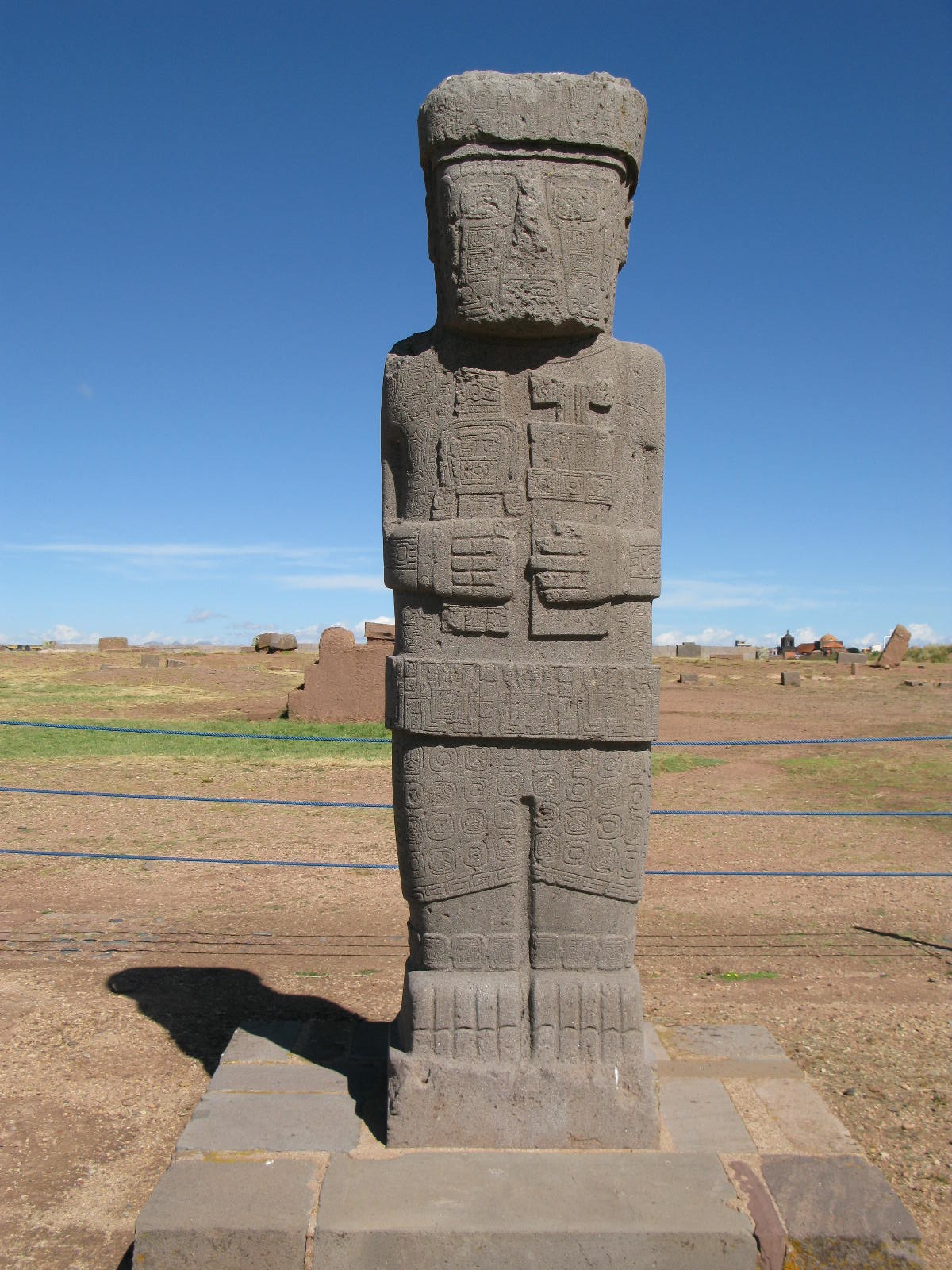
Statue of a shaman, corresponding with the artistic style of the temple complex.
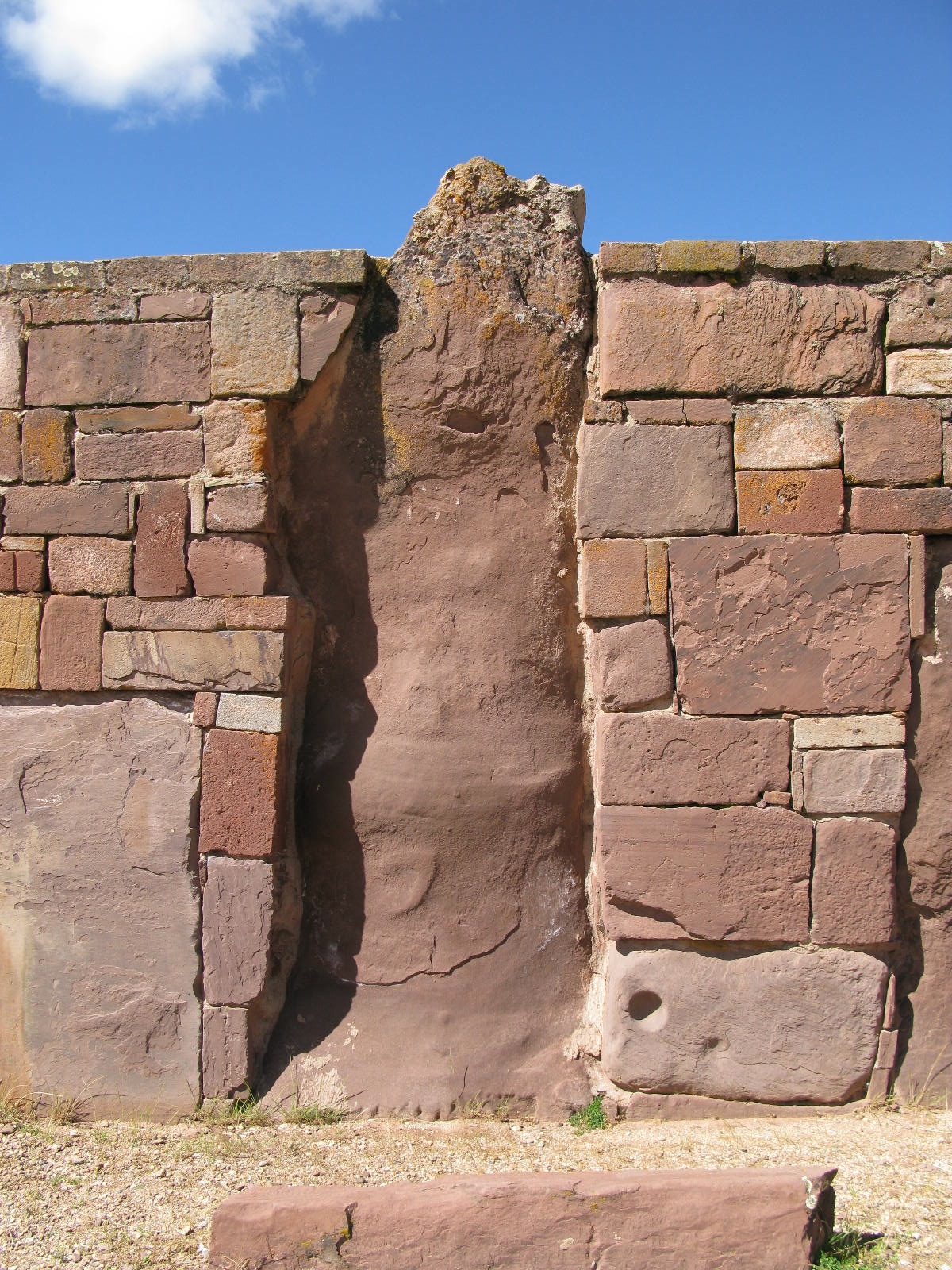
Older carved standing stone, presenting much greater wear and a different artistic style than the others. These megaliths show a greater spread of lichen, and some of them are eaten up by wave erosion wear, while the rest of the temple complex show no such wear. Logic tells us that they have been standing in water at one point.
edit on 22-9-2014 by Heliocentric because: The woods are ablaze brown and gold colors merging seasons
changing
a reply to: Heliocentric
Thanks for the reply Heliocentric
Yep lots of cultures out there and we will probably find more in Zagros mountains and elsewhere but those are not quite global world wide civilization with technology beyond our own or in some beliefs beyond what the natives of those regions processed which is the claim were are looking at at times, or more precisely a civilization capable "of stone work we cannot replicate today'. It is that civilization we appear to be looking for those great stone masons with x stone working technology.
That is the claim which I hold we have no evidence for and a great deal against.
Could we/will we find evidence of more cultures in the future? Yep. will we find their was a global advance civilization probably not.
In what way - has anyone published a paper on these differences? So which proto-Aymara or Quechua group would you assign their construction to? The Collas, Zapanas, Kallahuayos and Lupacas existed in that area but what material/stone working culture did they have at whatever time you believe these temples were made?
The second image is from the Kalasasaya Temple? There a number of standing stones there inserted into the wall and they seem out of place as you mentioned - are we even certain they were part of the structure as made or are they just rocks that got incorporated into the structure when it 'reconstructed'?
So your idea seems very realizable a megalithic site from what 3500-3000 years ago reused in later temple?
Have you ever seen a diagram/map of the site prior to its reconstruction?
That is interesting what was your area of interest and where did you do your field work at/with? I believe you said many months ago that you investigated megalithic ruins in Europe?
Thanks for the reply Heliocentric
Yep lots of cultures out there and we will probably find more in Zagros mountains and elsewhere but those are not quite global world wide civilization with technology beyond our own or in some beliefs beyond what the natives of those regions processed which is the claim were are looking at at times, or more precisely a civilization capable "of stone work we cannot replicate today'. It is that civilization we appear to be looking for those great stone masons with x stone working technology.
That is the claim which I hold we have no evidence for and a great deal against.
Could we/will we find evidence of more cultures in the future? Yep. will we find their was a global advance civilization probably not.
The problem are the standing stones, that seem incongruent and anachronistic to the rest of the complex. The artistic style and advanced wear (in relation to the rest of the temple complex) of these Andesite and red sandstone megaliths indicate that they were not carved by the temple builders.
In what way - has anyone published a paper on these differences? So which proto-Aymara or Quechua group would you assign their construction to? The Collas, Zapanas, Kallahuayos and Lupacas existed in that area but what material/stone working culture did they have at whatever time you believe these temples were made?
The second image is from the Kalasasaya Temple? There a number of standing stones there inserted into the wall and they seem out of place as you mentioned - are we even certain they were part of the structure as made or are they just rocks that got incorporated into the structure when it 'reconstructed'?
So your idea seems very realizable a megalithic site from what 3500-3000 years ago reused in later temple?
Have you ever seen a diagram/map of the site prior to its reconstruction?
That is interesting what was your area of interest and where did you do your field work at/with? I believe you said many months ago that you investigated megalithic ruins in Europe?
edit on 22/9/14 by Hanslune because: (no reason given)
a reply to: Hanslune
So were the occupants of the cave multi ethnic over time from 8,500 BCE to 6,200 BCE or were these in essence the same group bringing in new plants.
Side note I read a lil too fast and saw Ají pepper (Capsicum baccatum) then my eyes wondered down to what I thought was Oxtail.. recipe??. but it turned out to be Oca (Oxalis tuberosa)
Anyways S&F on the thread scholar.
So were the occupants of the cave multi ethnic over time from 8,500 BCE to 6,200 BCE or were these in essence the same group bringing in new plants.
Side note I read a lil too fast and saw Ají pepper (Capsicum baccatum) then my eyes wondered down to what I thought was Oxtail.. recipe??. but it turned out to be Oca (Oxalis tuberosa)
Anyways S&F on the thread scholar.
edit on 23-9-2014 by Spider879 because: (no reason given)
originally posted by: Spider879
a reply to: Hanslune
So were the occupants of the cave multi ethnic over time from 8,500 BCE to 6,200 BCE or were these in essence the same group bringing in new plants.
Side note I read a lil too fast and saw Ají pepper (Capsicum baccatum) then my eyes wondered down to what I thought was Oxtail.. recipe??. but it turned out to be Oca (Oxalis tuberosa)
Anyways S&F on the thread scholar.
Hi spider
It was my understanding that the occupants may have been the same, ie a family grouping that used the cave for that long period some of the authors thought these people later became the Chavin culture.
images of Kalasasaya temple:
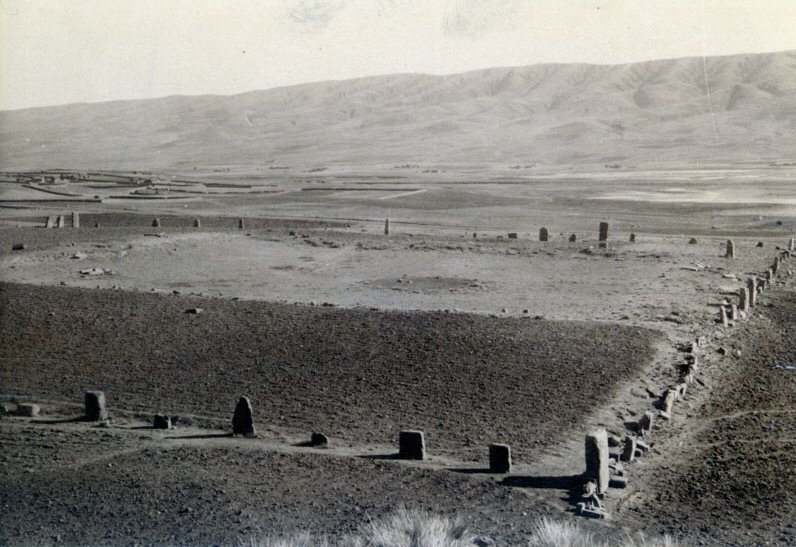
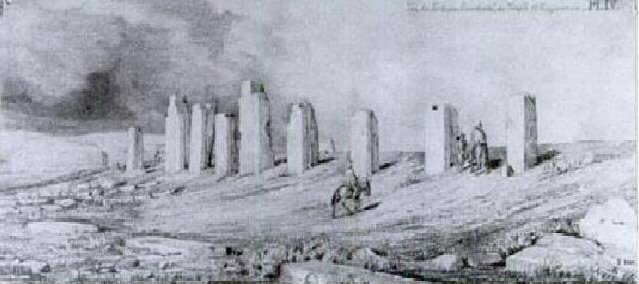
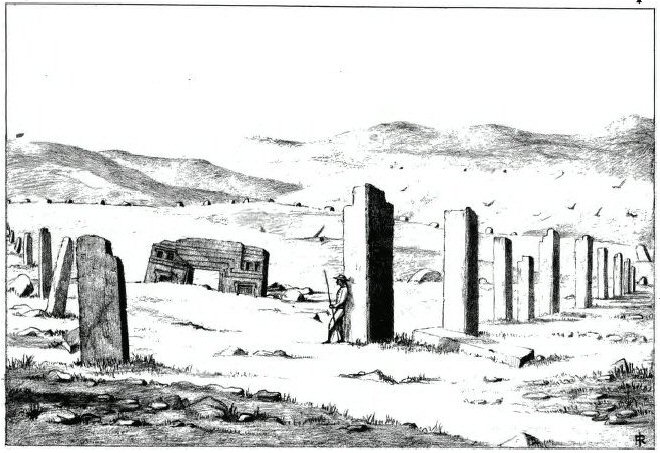
What it is thought the temple may have once looked liked
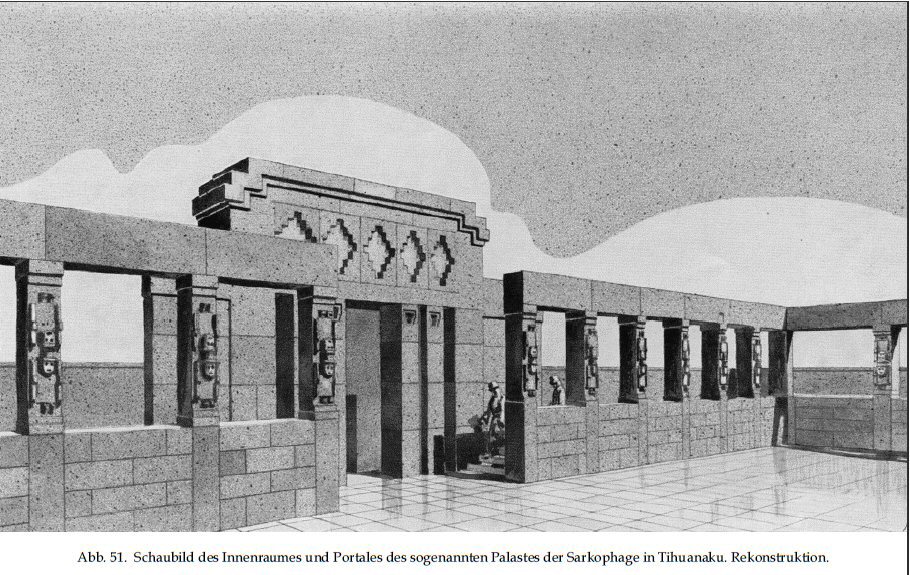

The temple entrance as it is today

When found (or recorded)
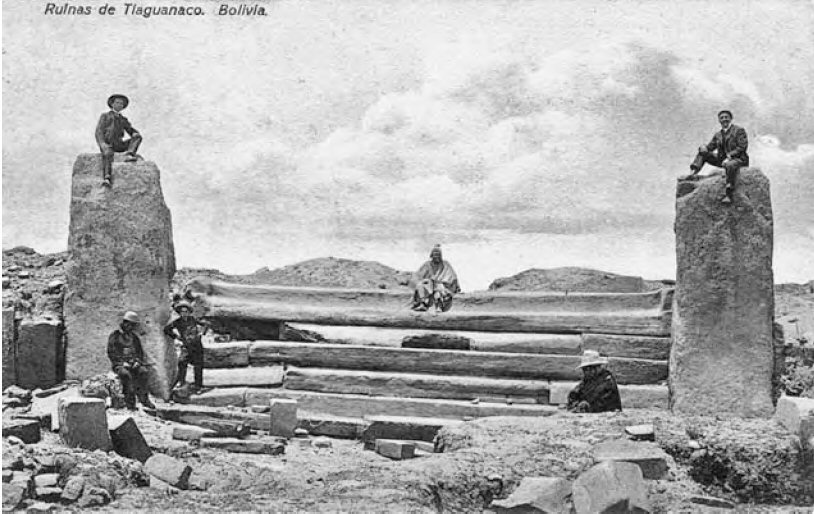



What it is thought the temple may have once looked liked


The temple entrance as it is today

When found (or recorded)

edit on 24/9/14 by Hanslune because: (no reason given)
originally posted by: Hanslune
a reply to: Heliocentric
Thanks for the reply Heliocentric
Yep lots of cultures out there and we will probably find more in Zagros mountains and elsewhere but those are not quite global world wide civilization with technology beyond our own or in some beliefs beyond what the natives of those regions processed which is the claim were are looking at at times, or more precisely a civilization capable "of stone work we cannot replicate today'. It is that civilization we appear to be looking for those great stone masons with x stone working technology.
That is the claim which I hold we have no evidence for and a great deal against.
Ok I get it, you're arguing against an ancient high technological civilization that flew around in Vimanas, moved stone with levitation technology and possessed some type of advanced stone cutting technology. I don't know much about that, so I'm not going to argue for or against it.
I don't see any great mystery in the Inca stone cutting technology. Let's not approach this in this thread since it's not the subject matter. Archaeologists and researchers such as George Squier, Emilio Harth-terré and Jean-Pierre Protzen have excavated Inca and pre-Inca quarries, studied the extraction techniques and tools used to work the stones. The techniques are pretty basic and reminiscent of pre-industrial European techniques.
This does not mean that there are no mysteries surrounding the Inca and pre-Inca structures. One is the same as we find in Egypt; why work on such a gigantic scale, why use such enormous stone blocks, why use millimeter precision when not necessary, and why build in such impossible places? The Incas and pre-Incas did not hesitate to pry off 20 ton stone blocks up on a mountain, only to drag them down, then up another mountain, at 3000 to 4000 m altitude. Another mystery are the quarries themselves. They seem to have been worked, fashioned and polished into surrealist shapes after the stones were quarried. All in all, it speaks of a very particular relationship with the stone itself, its properties and function in the Inca cosmology, that we know very little about and that seems to escape most archaeologists that address the subject. Similar to Stonehenge, where the bluestones were brought all the way from the Preseli Hills in Wales, certain type of stone seem to have had certain properties or imbedded some type of meaning to the Incas. Also, we do not know how the Incas manipulated gigantic stone blocks and fitted eight sided 15 ton stones with extreme precision into walls with similar stones. Some researchers seem to discard speculation about this as if there was nothing to it, but it is a great mystery, and I personally cannot explain how and with what technique the walls of Saqsayhuaman were built. It does not mean Atlanteans or aliens built them, but it means that we have lost a certain type of advanced knowledge that even 21st century man can't figure out...so far.
originally posted by: Hanslune
In what way - has anyone published a paper on these differences? So which proto-Aymara or Quechua group would you assign their construction to? The Collas, Zapanas, Kallahuayos and Lupacas existed in that area but what material/stone working culture did they have at whatever time you believe these temples were made?
As far as I know, no one has published anything in that sense. It would be rather daring for an archaeologist to suggest such a thing, simply based on the appearance and the qualities of the standing stones. More corroborating data is needed for it to stick to the wall. When you talk off the record with some of them though, they seem mystified by the whole site. It is not at all clear what went on here, and there are conflicting theories as to what the whole temple complex was about. I cannot assign these standing stones to any particular pre-columbian culture in the Tiwanaku region for the moment. For that, we need to find a similar standing stone outside of the temple complex, in a pristine environment that we can date and connect to a particular group.
Here's my personal opinion on the standing stones, which may change as new data comes along. As I said, I believe that they belong to an earlier temple complex, of which parts have been recycled into the new one. I believe that the older temple complex was dedicated to is this guy:
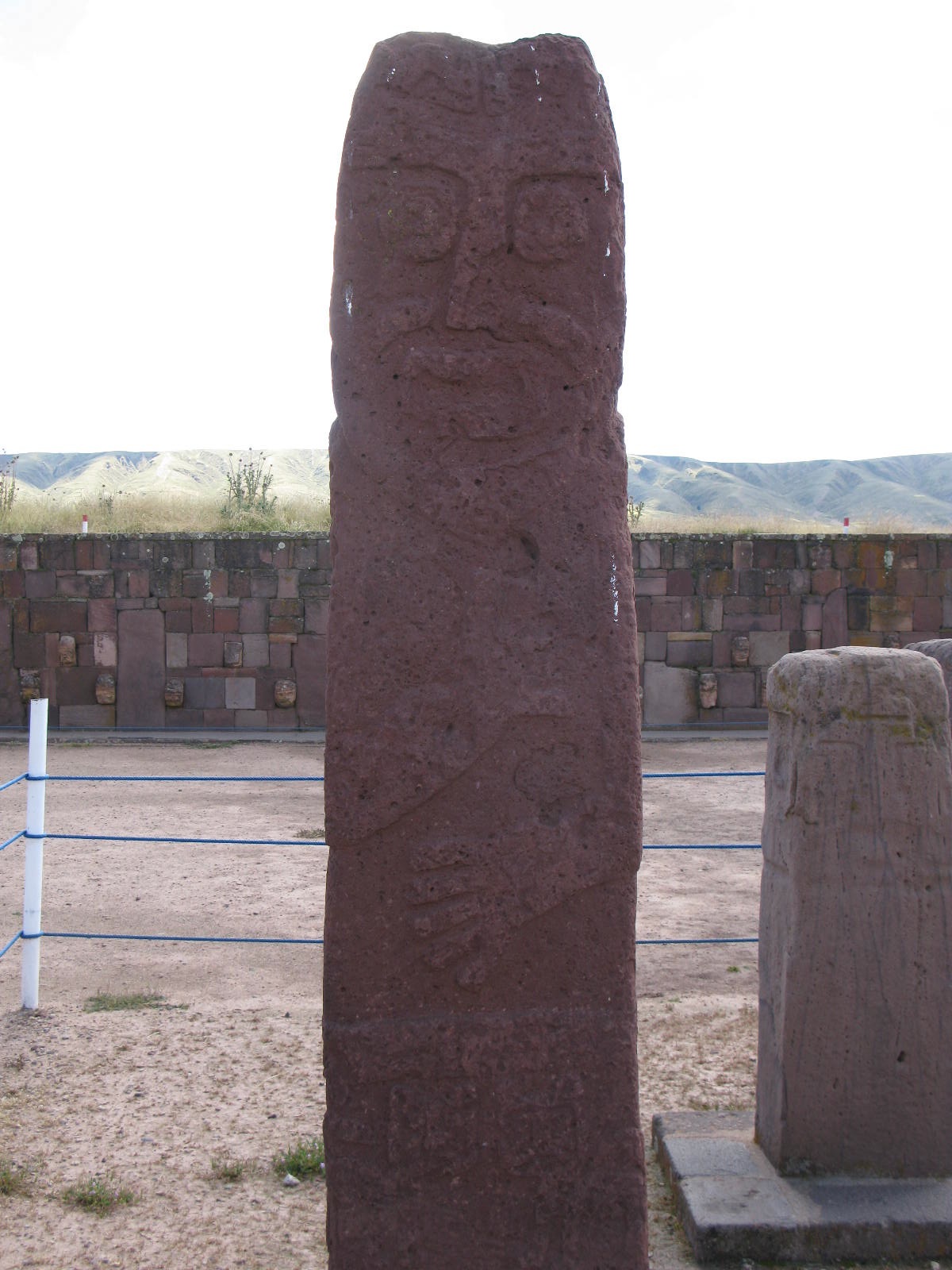
It is generally accepted by archaeologists that this statue (which I also attribute to the earlier temple complex) - situated in the center of the sunken plaza – represents Viracocha, the Andean creator god. We find these sunken plazas in many if not most Andean and North Peruvian cultures, from Caral an on, and they are always the center piece of a temple complex. Viracocha is a very old deity in Andean cosmology, he appears sometimes in the form/motif of a staff god, and we find staff god representations all over Tiwanaku.
According to a myth recorded by Juan de Betanzos, one of the early Spanish 16th chroniclers with a first hand glimpse into Inca cosmology, Viracocha rose from Lake Titicaca (while other versions say he rose from Isla del Sol, Tiwanaku, and yet others from the cave of Pacaritambo) during the time of darkness to bring forth light. He created mankind by breathing life into stones. He sculpted these stones into men and women deep inside the earth, and placed them in different openings to the outside world like caves, lakes and water springs. He named these places pacarinas. He then named each statue, and by giving them life they became human beings. The Sun, the Moon and the stars had not yet been created, darkness prevailed.
Viracocha ordered the humans to live in peace, unity and virtue, but man soon forgot and became corrupt. Other sources claim these first human creations were ugly giants, and Viracocha was displeased with his creation. To punish them, he turned them back into stone, then unleashed a deluge (called Unu Pachakuti). Once the deluge was over, he made new humans, more in his taste, from smaller stones. So that they would not loose their way, he created the Sun, the Moon and the stars.
So, we have a Viracocha creation myth in which the first humans (or giants) were turned into stones. It's my hypothesis that this earlier temple or cult center housed these tall standing stones carved into human form, and that they represent these first creations of Viracocha. The heads that ornate the sunken plaza are either Viracochas (according to some alternative Viracocha myths, there wasn't one Viracocha but a race of Viracochas), or ancestors, rulers or shamans.
originally posted by: Hanslune
The second image is from the Kalasasaya Temple? There a number of standing stones there inserted into the wall and they seem out of place as you mentioned - are we even certain they were part of the structure as made or are they just rocks that got incorporated into the structure when it 'reconstructed'?
Yes, the second picture is from the Kalasasaya Temple. Alexei Vranich, Professor in the Anthropology department at UCLA and director of the Tiwanaku Project, admits that they've lost track of what are the original emplacements of the stones, and what are early reconstructions of the temple ground. Let's add that Tiwanaku is one of the most torn apart archaeological sites in the world. The site has been badly damaged by natural geological events, stone-mining, defacing of structures and approximative reconstructions. The nearby colonial town of Tiahuanaco is built to a high degree of stone quarried from the temple site, and the old church is entirely built from Tiwanaku stone and house several statues taken from it. Many of the local farmsteads have borrowed construction materal from the site. When the English drew a rail road through the Tiwanaku valley in the 19th century, they used tons of stone, idols, statues, monoliths and doorways from the site as railway sleepers, since there are no wood to be found in the area. As if that wasn't enough, they drew the railway right through the center of the temple complex. Major geological events have also fashioned the landscape. Earthquakes, landslides and floodings have jumbled the stratas in the valley that once was an alluvial plain. For instance, a ceremonial vessel carbon-dated to ca 130AD, was found in a strata carbon-dated to 1500BC. With this in mind, we must treat all geological strata of the site as possibly cross contaminated, and be skeptical to all types of chronology of the site.
It is quite possible that these standing stones were arranged in a completely different configuration once upon a time, and perhaps they marked astronomical alignments, as Arthur Posnansky speculated.
originally posted by: Hanslune
That is interesting what was your area of interest and where did you do your field work at/with? I believe you said many months ago that you investigated megalithic ruins in Europe?
Without wanting to dwelve on my past merits, which is not the subject of the thread, I was trained at Stockholm University and Birckbeck, London. Started out in Nordic Iron age, then changed field to Levanite Iron age, Bronze age, then Stone age, working mostly for the Hebrew University of Jerusalem, then moved to France and started teaching in Paris, then Brittany. I've stopped now and live between France and Peru.
All archaeology is interesting, but I've got a soft spot for Megalithic cultures.
originally posted by: Hanslune
There a number of standing stones there inserted into the wall and they seem out of place as you mentioned - are we even certain they were part of the structure as made or are they just rocks that got incorporated into the structure when it 'reconstructed'?
Yes. They are standing stones, carved and shaped into human beings, or other. They are just very worn and very old. When you study them for a while, letting the shadows move over the stone, you start to discern shapes and details,
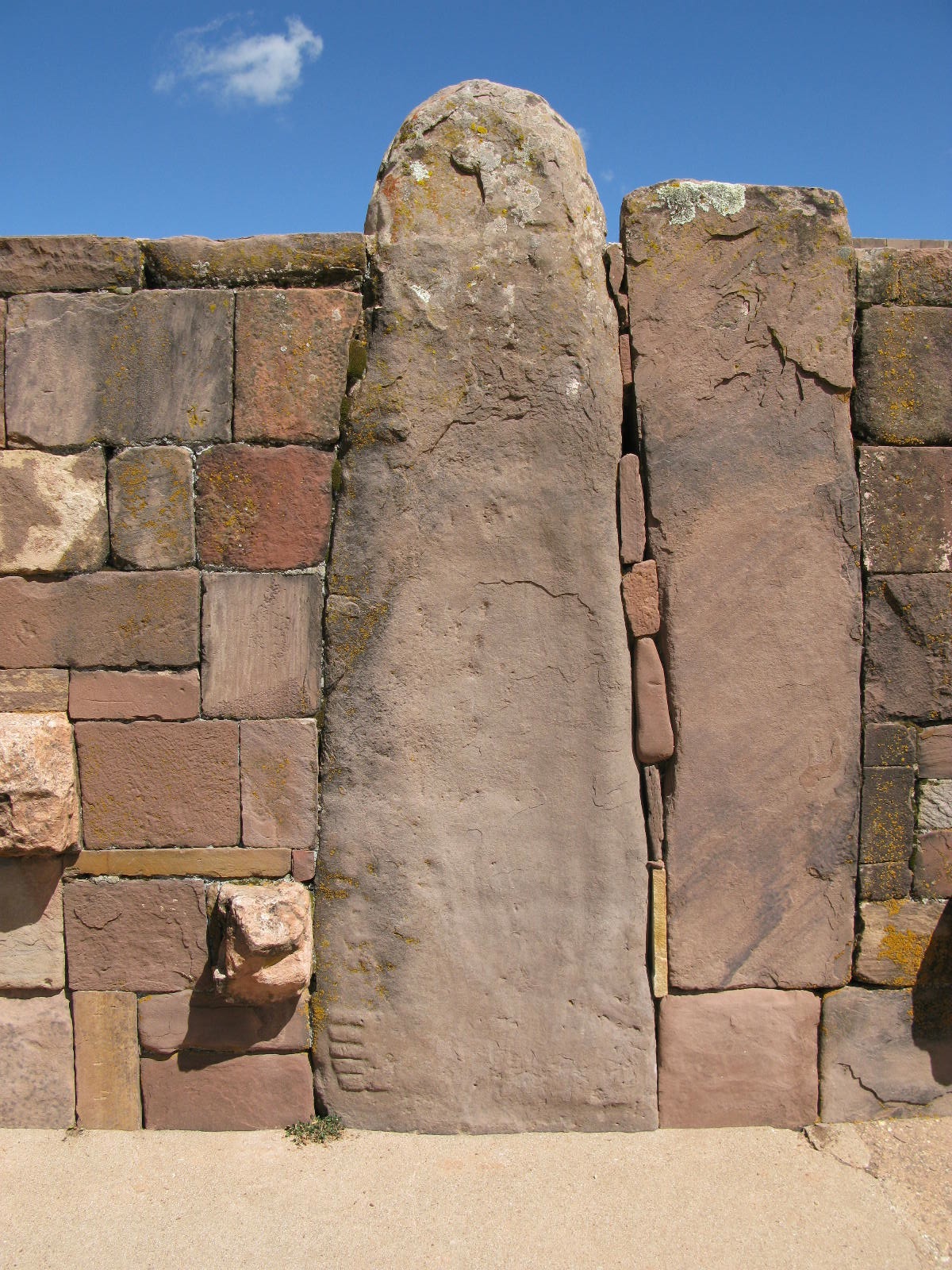
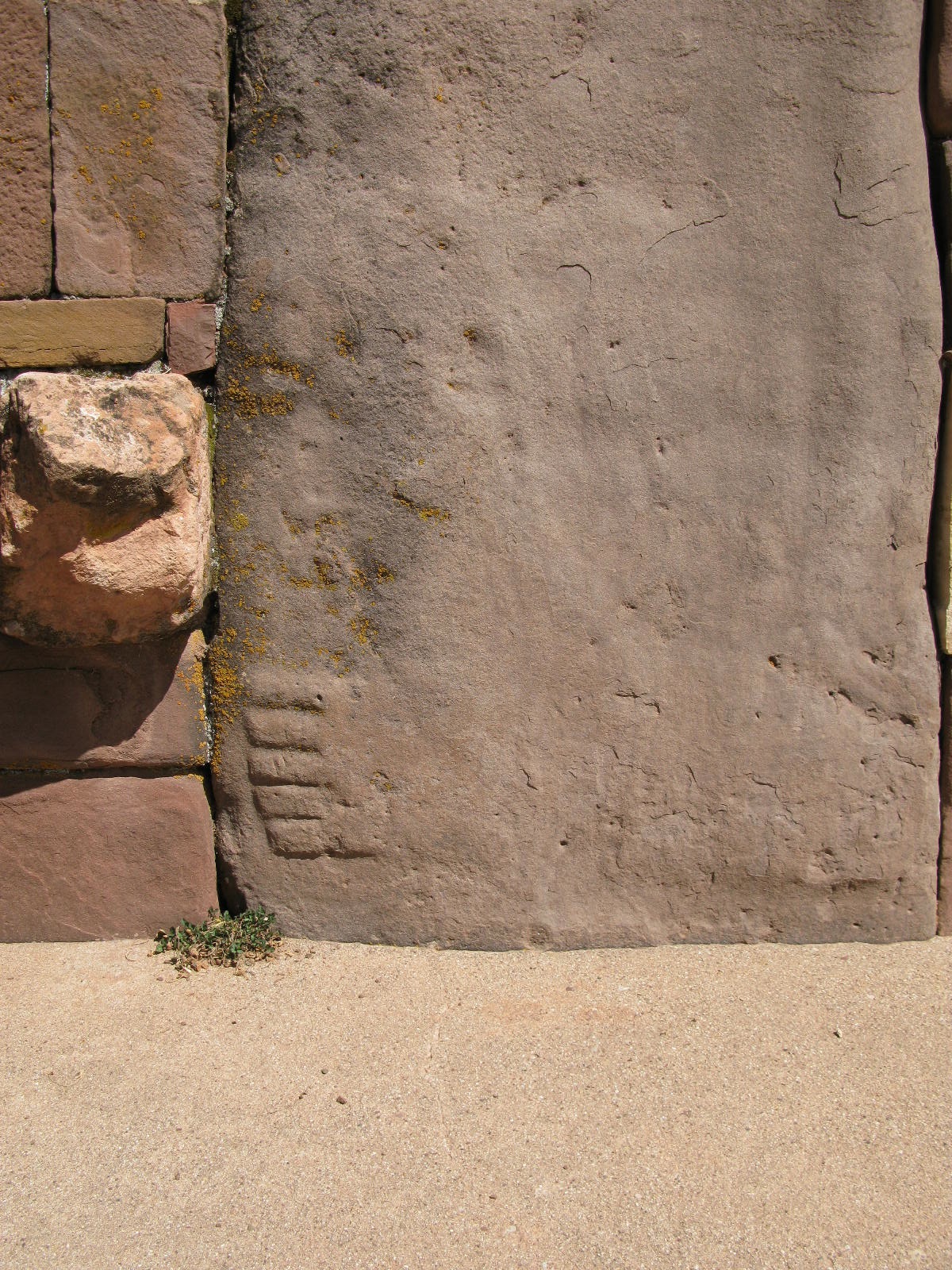
The Tiwanaku stone masons were capable of this when the temple complex was built,
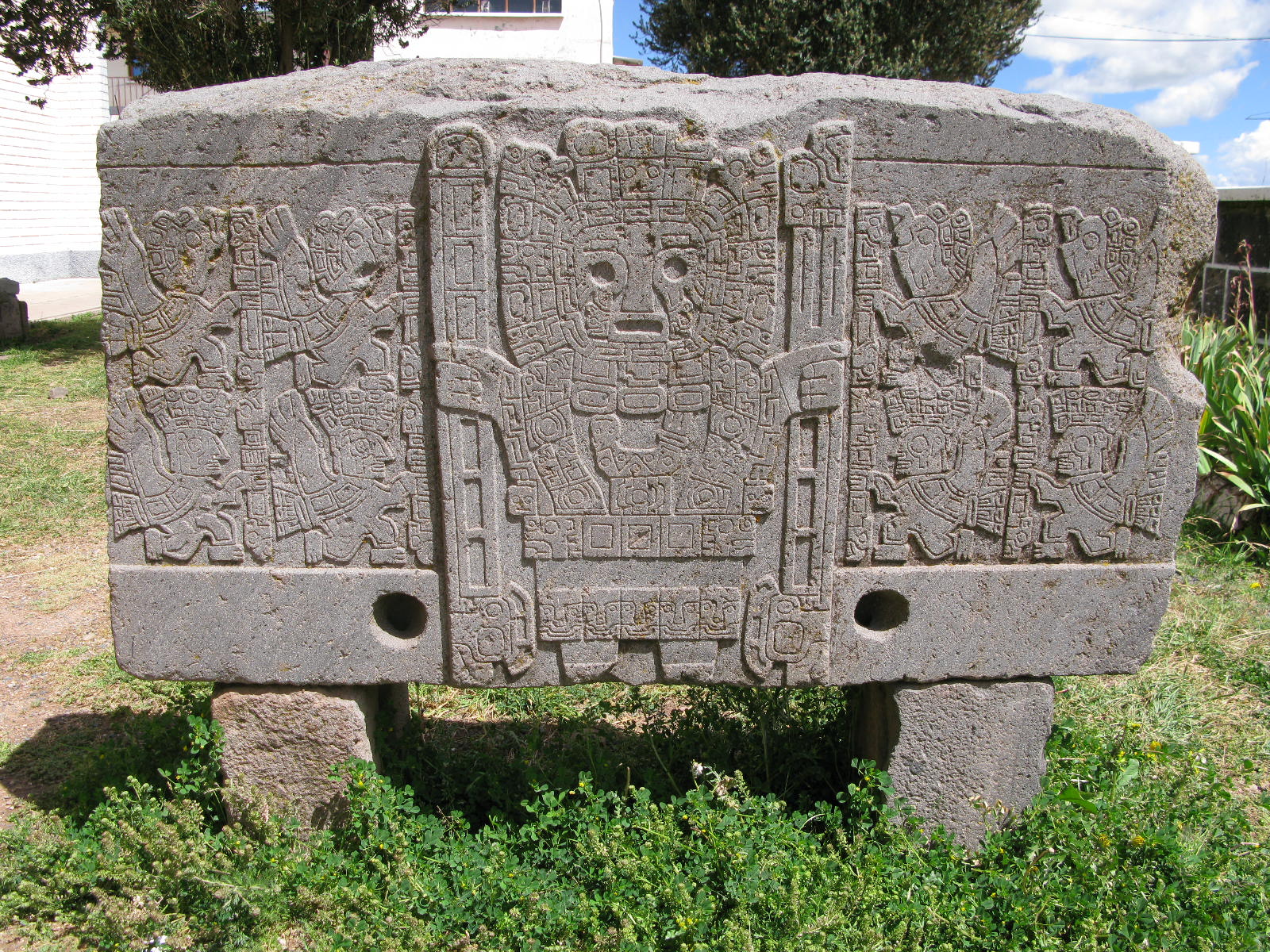
...and still they chose to put this crude stone figure as the absolute center piece in the holiest of the temple complex. Clearly it had a special status, my guess is it's very old.

a reply to: Heliocentric
Thoroughly enjoyed all that you shared.
Would love to visit the region someday (northern Chile, as well).
Thanks for your thoughts and insights!
Thoroughly enjoyed all that you shared.
Would love to visit the region someday (northern Chile, as well).
Thanks for your thoughts and insights!
new topics
-
Top Sci Fi/Horror Crossover Movies
Movies: 1 hours ago -
Magic Vaporizing Ray Gun Claim - More Proof You Can't Believe Anything Hamas Says
War On Terrorism: 2 hours ago -
One out of every 20 Canadians Dies by Euthanasia
Medical Issues & Conspiracies: 2 hours ago -
USS Liberty - I had no idea. Candace Owen Interview
US Political Madness: 3 hours ago -
What Am I Hearing
General Chit Chat: 11 hours ago
top topics
-
USS Liberty - I had no idea. Candace Owen Interview
US Political Madness: 3 hours ago, 12 flags -
A Bunch of Maybe Drones Just Flew Across Hillsborough County
Aircraft Projects: 17 hours ago, 9 flags -
Magic Vaporizing Ray Gun Claim - More Proof You Can't Believe Anything Hamas Says
War On Terrorism: 2 hours ago, 6 flags -
Top Sci Fi/Horror Crossover Movies
Movies: 1 hours ago, 5 flags -
What Am I Hearing
General Chit Chat: 11 hours ago, 4 flags -
One out of every 20 Canadians Dies by Euthanasia
Medical Issues & Conspiracies: 2 hours ago, 4 flags
active topics
-
-@TH3WH17ERABB17- -Q- ---TIME TO SHOW THE WORLD--- -Part- --44--
Dissecting Disinformation • 3638 • : angelchemuel -
USS Liberty - I had no idea. Candace Owen Interview
US Political Madness • 8 • : VariedcodeSole -
A Bunch of Maybe Drones Just Flew Across Hillsborough County
Aircraft Projects • 28 • : StudioNada -
One out of every 20 Canadians Dies by Euthanasia
Medical Issues & Conspiracies • 6 • : WeMustCare -
The Acronym Game .. Pt.4
General Chit Chat • 1009 • : FullHeathen -
Magic Vaporizing Ray Gun Claim - More Proof You Can't Believe Anything Hamas Says
War On Terrorism • 2 • : BeyondKnowledge3 -
Drones everywhere in New Jersey
Aliens and UFOs • 75 • : some_stupid_name -
President-Elect DONALD TRUMP's 2nd-Term Administration Takes Shape.
Political Ideology • 302 • : Oldcarpy2 -
Top Sci Fi/Horror Crossover Movies
Movies • 3 • : BeyondKnowledge3 -
And Here Come the Excuses!!
General Conspiracies • 194 • : cherokeetroy
